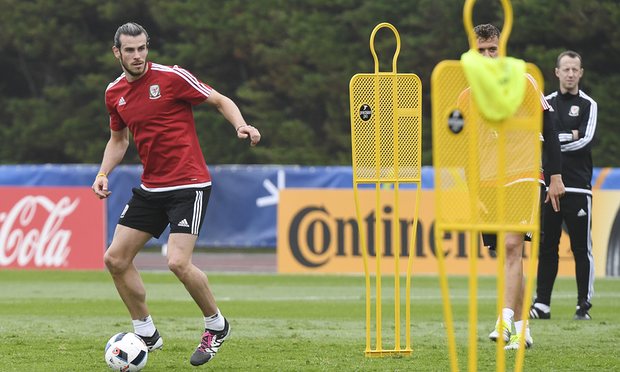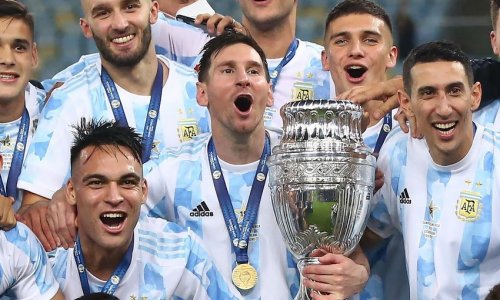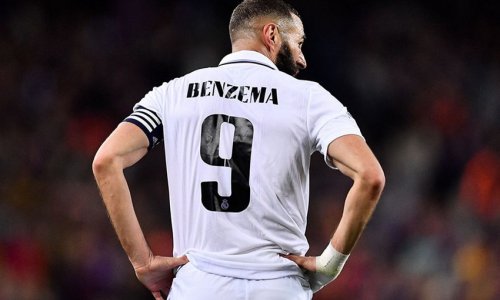Football tournaments are strange beasts. There was a time when they functioned like a great conference, where coaches, players, journalists and fans from all over the world got together and there was a mass exchange of ideas. They were the main contact one football culture had with another, and so it was that certain tournaments became noted for the way they introduced the world to a particular way of playing. Not any more.
Players and coaches move around far more than ever before. Television means that everybody watches the best all the time. Unless North Korea suddenly develop a devastating way of playing, there will never again be a team that takes a tournament by surprise, as Brazil did with their back four in 1958, England did with their 4-4-2 in 1966 or Argentina did with their 3-5-2 in 1986. National football now lags behind club football: even for those nations blessed with a squad of high-class players spread across all positions – and there are few – there simply isn’t sufficient time to develop the sort of sophisticated systems that predominate at elite club level.
Football at national level is far more rigid than at club level, the structures simpler. Coaches, understandably, start with the defence, partly because that’s where it makes sense to start and partly because nobody wants to suffer a humiliation that could leave an indelible stain on a career. And so international football tends to be more defensive than club football: the last Euro yielded just 2.45 goals per game, Euro 2006 2.48 and Euro 2004 2.48. There were 2.70 goals per game in the Premier League just finished; only once in the past 15 years has it dipped as low as 2.48. There were 2.76 goals per game in this season’s Champions League.
It is true that at times tournaments seem to take on a life of their own, as though infused by a spirit, as the last World Cup did in its early phase, when for a game or two everybody seemed wildly attacking. In the end, though, it settled down to a relatively modest 2.67 goals per game. In this new expanded Euro, in which three draws will probably take a side through, conservatism seems likely to reign. Under the same format, Brian Eastick’s England qualified for the last 16 of the Under-20 World Cup in 2011 as a best third-placed side with three 0-0 draws – the riches of Eastick it was not.
Shapes and styles will be reflective; innovation happens at clubs now, not with national sides. The majority of teams will play a 4-2-3-1 or 4-3-3. Most will look to counterattack. Many – Portugal, Wales, Slovakia – have one obvious creator through whom most attacks will be channelled. Carlo Ancelotti has spoken optimistically of this being a tournament of high-pressing and transitions, but in reality there are only a few sides with the cohesiveness to achieve that. Teams who play together in a consistent style for a prolonged period have an advantage in that regard, which in part explains the success of Chile at last year’s Copa America, but there are not many in Europe in a similar position.
Italy, their back three secure, may try to because that is Antonio Conte’s way, but he has never quite achieved the same level of pressing with Italy as he did at Juventus. England, with a core of players from Tottenham and Liverpool used to the approach, have shown signs of being able to press effectively – as they did in the final minutes of the friendly victory in Germany. The Barcelona and Bayern tendencies means Spain and Germany could do that.
But beyond that, all teams will have essentially the same approach of trying to keep things tight and involve their best creators. A powerful midfield and varied attack means France should be able both to regain possession and be effective with it, which is why they are favourites for many. In a sense the most interesting sides tactically are those that have come up with an unusual way of getting the best out of their star – Wales perhaps foremost among them.
In his club managerial career, Chris Coleman played a back three only once, on the final day of the 2005-06 season as Fulham beat Middlesbrough 1-0. He has implemented it with Wales, though, largely because it provides a platform for Gareth Bale, who can be supported not only by a back three, but by three midfielders of complementary virtues: the neat passing of Joe Allen, the energy of Joe Ledley and the forward surges of Aaron Ramsey.
Hal Robson-Kanu, the nominal centre-forward, scored just once in qualifying, but goals weren’t his prime objective; the Reading winger was there to pull defenders out of position and create space for Bale. Given Bale scored seven goals in qualifying it can fairly be said to have worked. The problem with a set-up like that, though, is that injuries remove key cogs and their replacements may not slip in so readily. With Robson-Kanu, Ledley and Allen all injury doubts that means a bespoke system may need a significant rejig.
That’s another reason for simplicity. Most countries have a far greater turnover of players than clubs do, and it’s almost impossible to train up replacements who can step in, not least because a coach has to work with the resources he’s given; he can’t simply sign a player of similar attributes.
And so most coaches go for off-the-shelf, blockish tactics and the result, often, is stalemate. Perhaps this tournament will be a surprise, perhaps it will develop a free-spirited mood of its own. But international football is what it is: of interest more for reasons of national pride and individual stories than for the innovativeness of the football played.
www.ann.az
Follow us !











